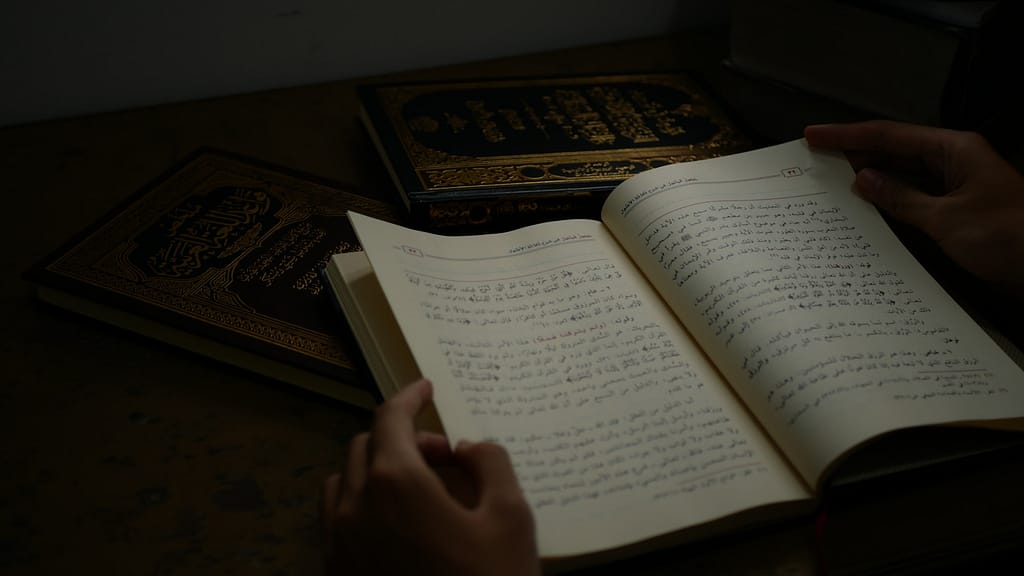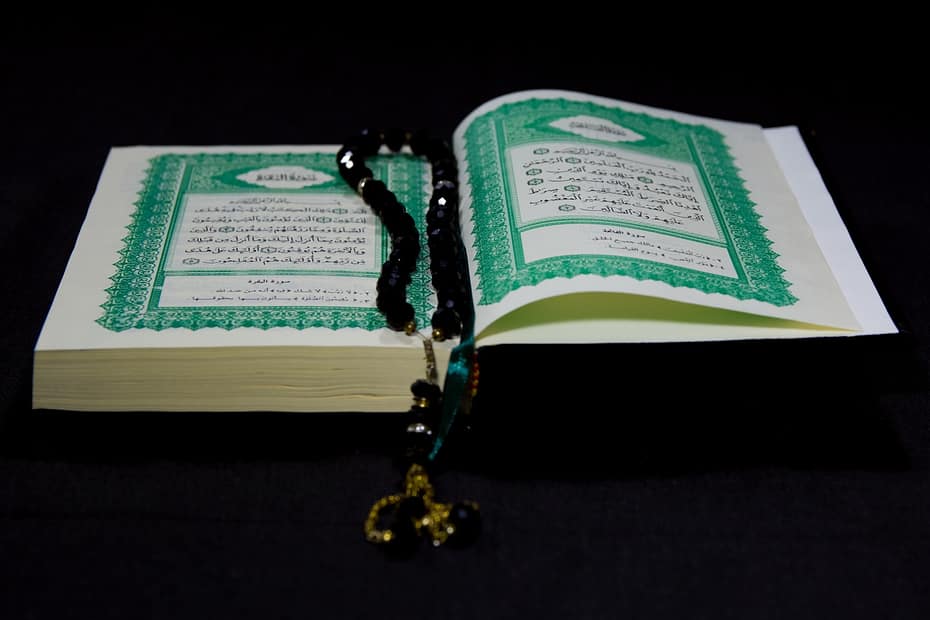Table of Contents
Many aspects of modern Muslim fashion are significantly influenced by the principles outlined in the Qur’an. As you explore this topic, you will uncover how these sacred texts guide personal expression while emphasizing and cultural identity. The integration of traditional values and contemporary styles creates a unique fashion landscape that reflects your faith and personal beliefs. Understanding this relationship not only enriches your appreciation of Muslim attire but also highlights the broader social impacts of modesty in today’s diverse world.
Historical Context of Modesty in Islam

The concept of modesty in Islam dates back to the early days of the religion, deeply rooted in the teachings of the Qur’an and the practices of the Prophet Muhammad. Modesty encompasses not only clothing but also behavior, reflecting a broader social principle aimed at fostering respect and humility. Understanding the historical context of modesty allows you to appreciate how these principles interact with modern fashion and self-expression within the Muslim community.
Early Islamic Dress Codes
Islamic dress codes were established in the context of the early Muslim community, drawing on Qur’anic teachings and the traditions of the Prophet Muhammad. You should note that the guidelines emphasized modesty, requiring both men and women to cover their bodies appropriately, which served to promote a sense of dignity and respect among individuals in society.
Evolution of Modesty Throughout the Ages
With the passage of time, the interpretation and expression of modesty in Islamic dress have evolved significantly. Different cultures and regions have influenced how modest clothing is designed, with local traditions amalgamating with Islamic principles. This has resulted in a rich tapestry of styles and practices that honor both faith and personal identity.
Throughout history, shifts in societal norms, politics, and cultural exchanges have impacted Islamic modesty. In different eras, you will find that styles have adapted to the changing landscapes, from the conservative wardrobes of early Muslims to the diverse sartorial expressions seen today. Today, as you explore modern Muslim fashion, you will encounter a variety of interpretations that balance traditional modesty with contemporary fashion trends, reflecting the dynamic interplay between faith and identity.
Key Principles of Modesty in the Qur’an

You will find that the Qur’an emphasizes key principles that guide the behavior and dress of Muslims. These principles not only encompass the way one dresses but also extends to attitudes, actions, and interactions. The Qur’an advocates for an overall disposition of humility and self-respect, underscoring the importance of safeguarding your dignity while promoting a sense of self-control and moral integrity.
Qur’anic Verses on Modesty
Around the Qur’an, specific verses, such as Surah An-Nur (24:30-31) and Surah Al-Ahzab (33:59), outline directives for both men and women regarding modest attire. These verses articulate the significance of dressing in a manner that signifies piety and respect, encouraging believers to seek beauty in both spirit and appearance while avoiding displays that may attract undue attention or provoke temptation.
Interpretations and Cultural Variations
For many, personal and cultural interpretations of Qur’anic modesty can greatly influence how Islamic teachings are applied in everyday life. Various cultures interpret modesty differently, shaping garment choices, hairstyles, and even the extent of covering the body. Such variations are a reflection of local customs and traditions, contributing to a rich tapestry of Muslim fashion worldwide.
Quranic principles of modesty often lead to diverse interpretations across various cultures. For instance, what may be deemed appropriate attire in one region might differ in another due to historical, geographical, and social factors. Many communities adapt these Qur’anic guidelines to their cultural contexts, leading to unique expressions of faith. Factors like climate, accessibility to fabrics, and contemporary influences also play a role in shaping these variations.
Modern Muslim Fashion Trends
Any discussion on modern Muslim fashion trends reveals a vibrant fusion of traditional modesty with contemporary aesthetics. You’ll notice a growing diversity in styles, fabrics, and colors as designers are increasingly exploring innovative ways to cater to your fashion preferences while respecting Islamic principles. From flowing abayas to chic hijabs and tailored ensembles, there’s something for everyone, enabling you to express your identity and fashion sensibility without compromising on modesty.
Balancing Tradition and Contemporary Styles
About modern Muslim fashion, the balance between tradition and contemporary styles is vital in providing you with versatile options. You may find that many designers draw inspiration from their roots, adapting historical garments to suit today’s trends. This creates an opportunity for you to showcase your heritage while enjoying the latest fashions, allowing you to express your individuality.
Influential Designers and Brands
Trends in influential designers and brands have transformed the landscape of Muslim fashion, making it more accessible and stylish. You might seek inspiration from a plethora of designers like Hana Tajima, who blend cultural elements with modern aesthetics. Additionally, brands such as Modanisa and ASOS offer collections that your wardrobe will appreciate, enabling you to stay fashionable and modest at the same time.
Modern Muslim fashion is significantly shaped by designers who understand your desire for style and modesty. This has led to the rise of influential names like Annah Hariri and Zahrat Al Awaileh, who prioritize both aesthetics and the principles of Islamic dress. Their collections often make waves on social media, inspiring you to explore bold patterns, vibrant colors, and innovative cuts that redefine your understanding of modest fashion. As you engage with these designers, your wardrobe opportunities expand, allowing you to create a personal style that reflects both modernity and tradition.
The Role of Social Media
Keep in mind that social media has revolutionized how modest fashion is perceived and shared globally. Platforms like Instagram and TikTok allow you to explore diverse interpretations of modesty, enabling you to connect with a community that shares similar values. This digital space promotes the creativity and individuality of modern Muslim fashion, often leading to trends that reflect contemporary culture while adhering to modest principles.
Influencers and the Modesty Movement
Along with this, influencers play a significant role in the modesty movement, showcasing their personal styles that align with Islamic values. As you follow these figures, you gain access to a wealth of fashion ideas and inspiration that empower you to express your beliefs while embracing modern aesthetics. Their content often encourages authenticity, inviting your individual taste into the conversation around modest fashion.
Impact on Cultural Perceptions
Beside personal expression, social media has a notable impact on cultural perceptions of modesty within various communities. Users are challenged to rethink stereotypes associated with Muslim dress, as they witness influential figures confidently promoting stylish yet modest attire. This exposure not only broadens your understanding but also fosters acceptance and appreciation for diverse styles that adhere to the principles of modesty.
In fact, as social media showcases a variety of modest fashion expressions, it plays a pivotal role in reshaping how society views Muslim women. You are likely to find that such representations counteract prevailing stereotypes, emphasizing empowerment and choice. By engaging with these narratives, you contribute to a more nuanced understanding of modesty in fashion, encouraging open dialogues about cultural diversity and individual expression within the global context.
Challenges and Critiques
Now, while the Qur’an offers guidance on modesty, many face challenges in interpreting these teachings within modern fashion contexts. Critics often argue that the requirements for modesty can be overly restrictive, leading to a disconnect between traditional values and contemporary styles. Additionally, societal pressures can complicate your understanding of what modesty means, making it difficult to balance personal expression with religious guidelines.
Misinterpretations of Modesty
About modesty, misinterpretations can arise, often leading to confusion within the Muslim community. Some may focus excessively on outward appearances, neglecting the deeper spiritual aspects of modesty emphasized in the Qur’an. This shift can result in varying standards of what is deemed acceptable, causing division and misunderstanding among individuals striving to align their fashion choices with their faith.
Navigating Fashion and Faith
Along your journey of blending fashion with faith, you might encounter numerous options that both respect Islamic teachings and allow you to showcase your personal style. It’s important to explore diverse interpretations of modern fashion that can cater to modern trends while still adhering to your beliefs. Engaging with Muslim designers or opting for qualities that provide elegance without compromising religious values can be a rewarding compromise.
The relationship between faith and fashion is dynamic, and navigating this space requires thoughtful consideration. You can choose designs that reflect both your identity and beliefs, such as layering, embracing vibrant colors, or selecting fabrics that offer comfort and style. Ultimately, your fashion choices should encouraging you to express your individuality while staying true to your faith.
Global Perspectives on Modesty
Different communities approach modest dress in unique ways, influenced by local customs, traditions, and the societal context in which they exist. This rich tapestry of modesty reflects not only adherence to Islamic teachings but also the diverse identities within the Muslim world, inviting you to explore how these perspectives shape modern fashion.
Modesty in Different Muslim Communities
Along your journey into the world of Muslim fashion, you’ll find that modesty is expressed differently across various communities. From the vibrant styles of South Asia to the minimalist interpretations in Scandinavia, each culture adds its distinctive touch while respecting the underlying principle of modesty. These variations encourage you to appreciate the rich diversity of Muslim heritage in fashion.
Cross-Cultural Influences
By engaging with other cultures, you may observe how modern Muslim fashion has evolved through the exchange of ideas and styles. Cross-cultural influences can lead to fresh interpretations of modest attire, blending traditional elements with contemporary designs.
Modesty plays a significant role in how cultures influence one another in fashion. As Islamic principles interact with global fashion trends, you may find that designers are merging Western styles with traditional Islamic garments to create hybrid pieces that resonate with a wider audience. This blending not only fosters inclusiveness but also encourages you to embrace a personal interpretation, custom-tailored to your lifestyle and aesthetic preferences.
Summing up
With this in mind, understanding the influence of modesty as outlined in the Qur’an will empower you to make informed choices about your fashion. The balance between personal expression and adherence to cultural and religious values can shape your wardrobe while reflecting your identity as a modern Muslim. By embracing modest fashion, you contribute to a broader narrative that celebrates diversity and individuality in the context of faith, ultimately promoting a positive image of Islamic culture in today’s society.
